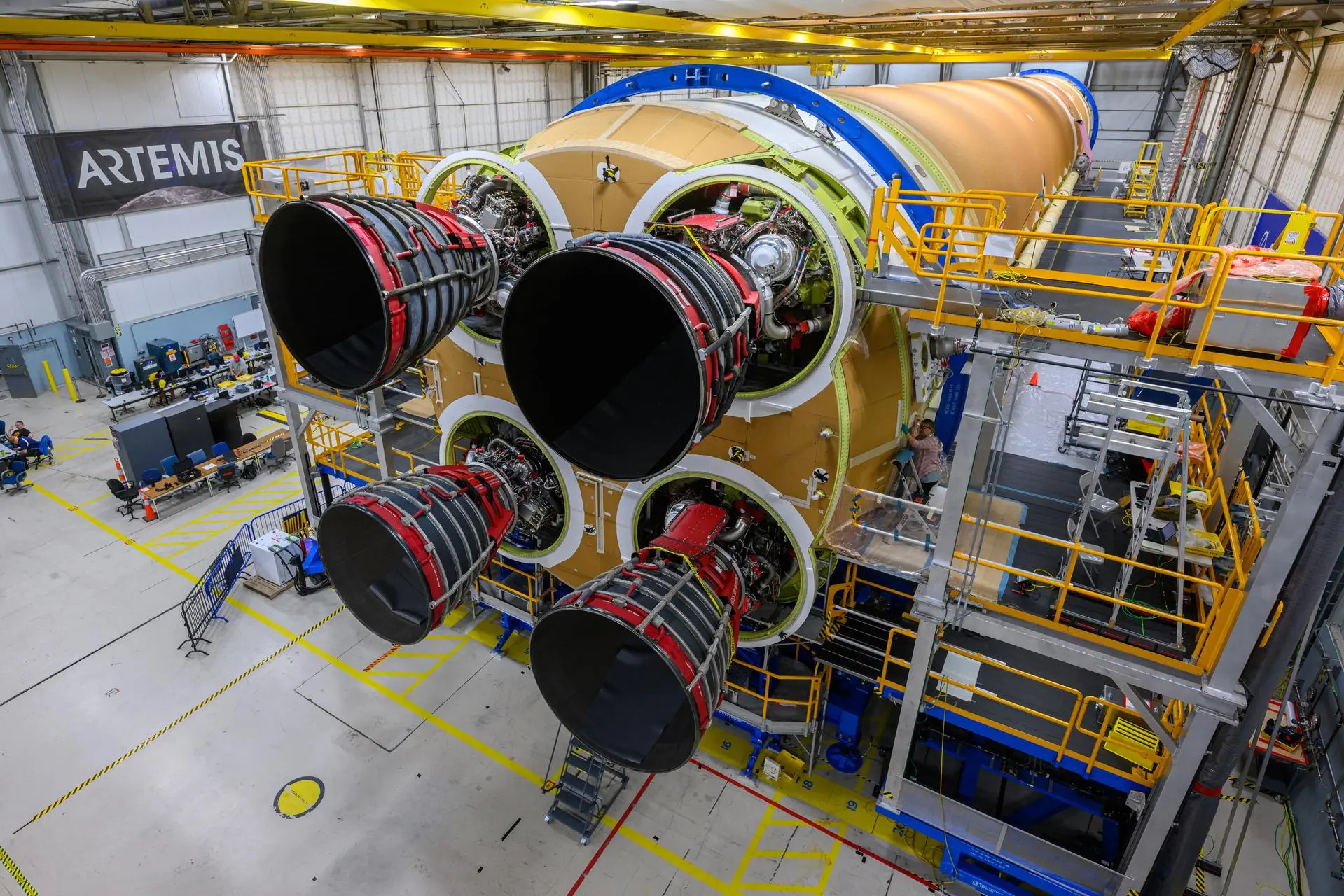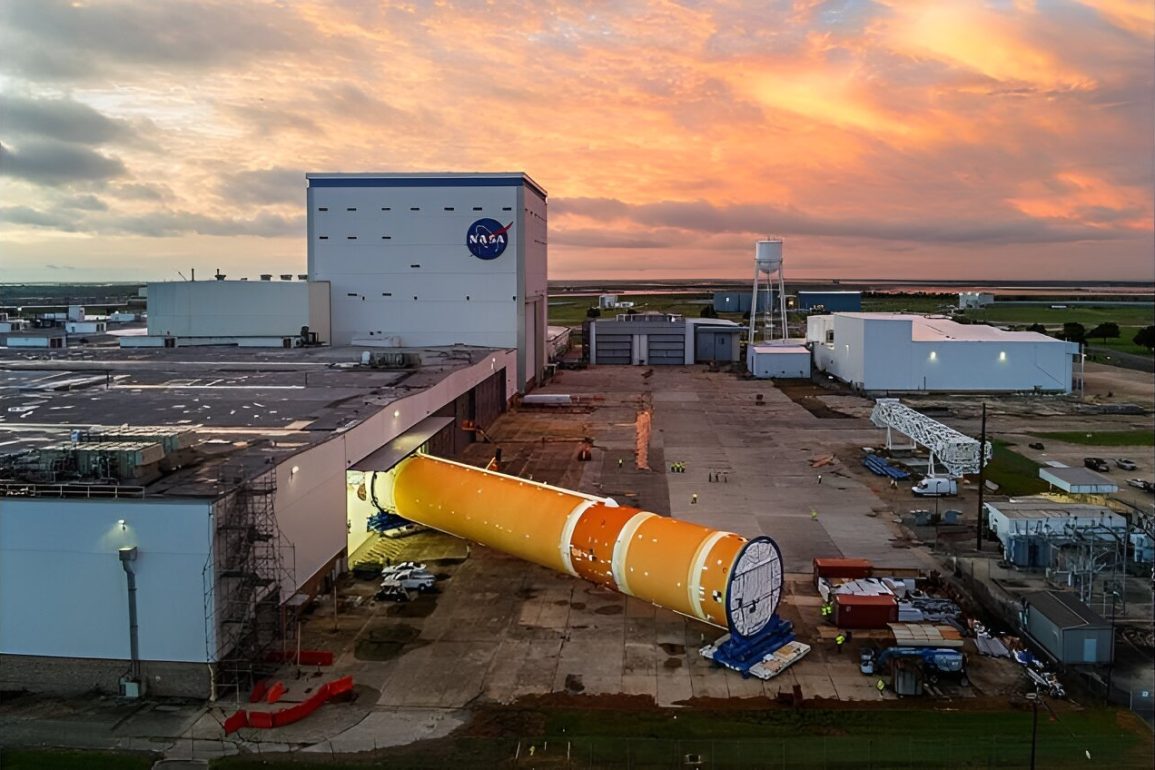On Wednesday morning, the largest rocket core stage ever built by NASA emerged from its cargo barge at Kennedy Space Center. Workers in reflective vests navigated the immense structure as it was moved from the Pegasus barge to the Vehicle Assembly Building (VAB).
This event drew close to 50 photographers and reporters, highlighting the monumental scale of the Artemis II core stage, which measures 26 feet in diameter and 212 feet in length.
The Artemis II mission, planned for no earlier than September 2025, will launch from pad 39B at Kennedy Space Center. Its crew includes NASA astronauts Reid Wiseman, Victor Glover, Christina Koch, and Canadian Space Agency astronaut Jeremy Hansen.
The Pegasus barge transported the core stage roughly 900 miles from NASA’s Michoud Assembly Facility in New Orleans to Port Canaveral, signifying a significant pre-launch milestone.

The core stage of the Space Launch System (SLS) is crucial for the Artemis II mission, capable of producing 8.8 million pounds of thrust with its four RS-25 engines and two solid-fueled booster rockets. It is designed to send astronauts into space at over 17,000 mph, carrying more than 59,525 pounds into deep space.
In the coming months, technicians will integrate this core stage with the Artemis II upper stage, solid rocket boosters, and the Orion spacecraft, resulting in a fully stacked SLS that stands about 320 feet tall.
NASA’s SLS deputy program manager, Chris Cianciola, discussed the transition from the uncrewed Artemis I flight to the crewed Artemis II mission, noting improvements and adjustments based on data from the test flight. Enhancements include hardening the launch pad to withstand the rocket’s blast.
Cianciola emphasized the coordination of various programs at Kennedy Space Center to ensure the smooth integration and operation of the SLS.
Boeing, the primary contractor for the core stage, highlighted the massive capacity of the internal propellant tanks, which hold over 733,000 gallons of rocket fuel.
Jay Grow, Boeing’s associate chief engineer for SLS launch operations, and Bill Muddle, the lead field integration engineer from Aerojet Rocketdyne, underscored the historical significance and technological advancements of the RS-25 engines, which have roots in NASA’s space shuttle era.
Muddle, reflecting on the journey of these engines from assembly to launch readiness, expressed his emotional connection to their development and their role in the Artemis II mission.

